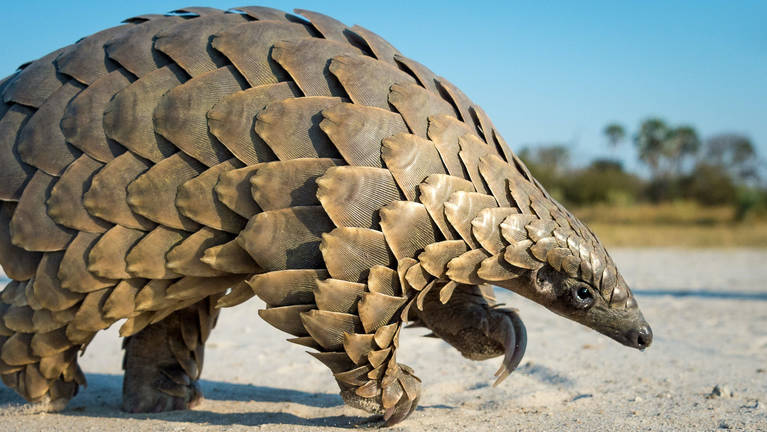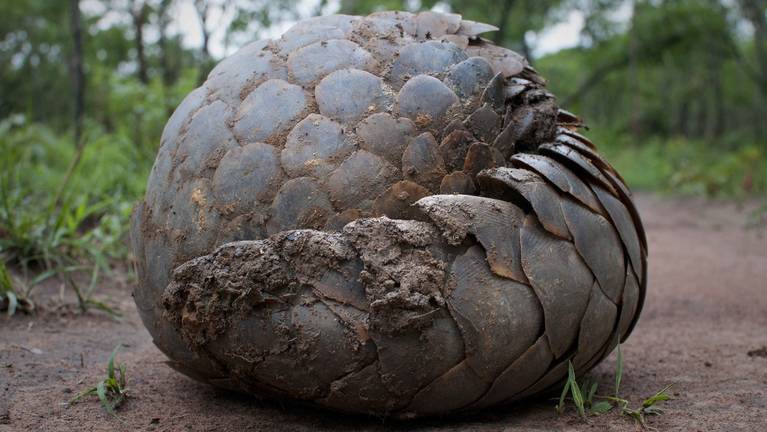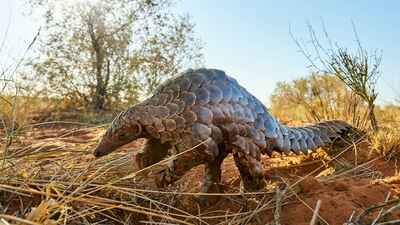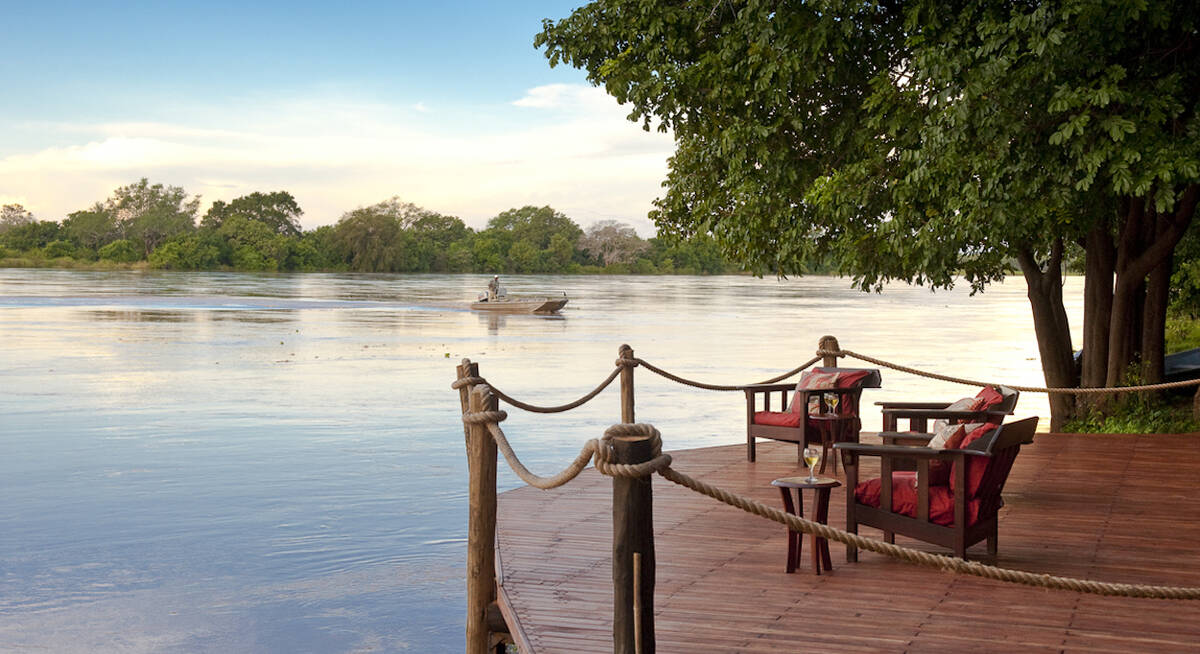Where to see Pangolin in Malawi
Pangolins are among Africa’s most extraordinary safari sightings, appearing more pine cone than animal in their unique armoury of scales. These nocturnal, ant-eating oddities are highly elusive and, today, increasingly rare.

Quick facts about Pangolin
| Scientific name: | Smutsia temminkii | Habitat: | Savannah woodland |
|---|---|---|---|
| IUCN status: | Vulnerable | Adult weight: | 5–27kg |
Pangolins are the only mammals with scales. These overlapping plates of keratin encase the animal’s upperparts to form a protective armour – impregnable when it rolls into a defensive ball. This species is one of four in Africa and the only one found in the east and south.
It feeds on ants and termites, holing up in a burrow by day and foraging by night. Long claws dig out its prey, which it laps up with a long, sticky tongue and – being toothless – crushes in its muscular stomach.
A pangolin walks largely on its hind-legs, extending its long tail as a counter-balance. The newborn baby rides on the base of its mother tail for its first few weeks.
15cm
Length of newborn baby
40cm
Length of tongue
20%
Scales as proportion of body weight
8
Pangolin species worldwide
Where to see pangolins in Africa
Pangolins are widespread but scarce. Sightings are highly unpredictable and remain a safari holy grail, even for experienced guides. Today, one or two locations in South Africa offer visitors slightly higher chances.
Top tips for viewing pangolins
To see a pangolin, you must head out on a night drive with fingers tightly crossed. Many reserves record occasional sightings, including the Okavango and Central Kalahari (Botswana), Luangwa Valley (Zambia), Hwange (Zimbabwe), Serengeti (Tanzania) and Kruger (South Africa), but, realistically, your chances are slim.
The odds are higher in a handful of reserves in South Africa’s Northern Cape and Karoo, notably Tswalu Kalahari and Samara, where pangolins are more active by day during winter. When approached, a pangolin may roll into a ball rather than retreat. Look, but don’t touch: its scything scales can inflict serious injuries on fingers.
Today all pangolins are of high conservation concern, the lucrative eastern market for their scales making them the world’s most illegally trafficked mammals.

Our best Malawi holidays for pangolin sightings
Based on our travellers' reports, these ideas for Malawi safaris are likely to give the best pangolin sightings

More information about pangolin in our other destinations
Click here for detailed information about pangolin in other countries, including the places for sighting pangolin.













